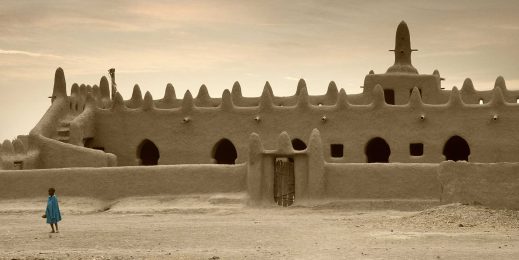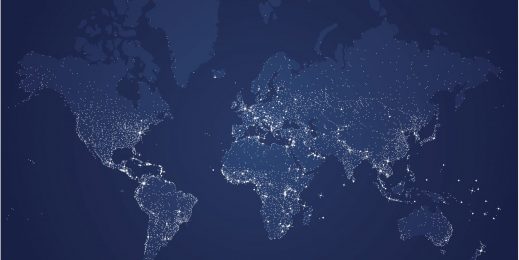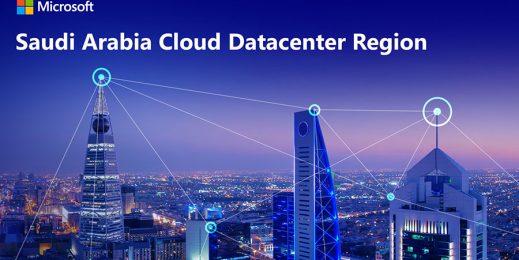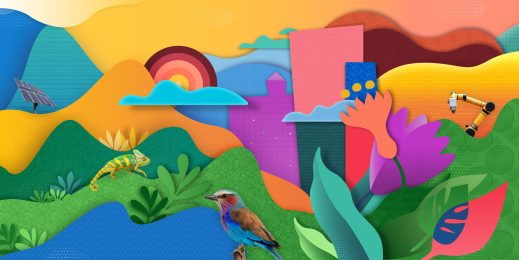
Conservationists turn to data and AI to protect Africa’s wildlife
It wasn’t long ago conservationists made the grim prediction that the mountain gorillas living in Central and East Africa would be extinct by the end of the 20th century. Against the odds, studies now show their numbers are on the rise. Thanks to a successful ecotourism strategy, these primates are generally considered more valuable alive than dead.
Preserving our natural environment is one of the greatest challenges of our time. Threats such as human settlement expansion, illegal wildlife killing, and climate change are placing enormous pressure on wildlife populations and species are declining at an unprecedented rate. Around 1 million species are currently threatened by extinction.
But stories like that of Africa’s mountain gorilla provide hope that it’s not too late to answer this daunting challenge. According to conservationists, there is still a small window to reverse this downward trend.
The pandemic has been an eye-opener
Events of the past year have spotlighted the urgency of the situation. Research shows COVID-19 had a significant impact on conservation efforts around the world. Africa was one of the regions hardest hit, with more than half of protected areas across the continent reporting they were forced to halt field patrols and anti-poaching operations.
Lockdowns and the resulting impact on tourism also took their toll. Prior to COVID-19, tourism hotspots were considered relative sanctuaries for wildlife. But during the pandemic, attacks were taking place even within popular tourist spots.
It highlighted one of the greatest challenges faced within many protected areas – that there simply isn’t enough manpower to monitor and safeguard the vast terrain required.
Though there’s certainly no single solution to this challenge, technology is providing some much-needed answers.
Unlocking access to key data
Informed policy decisions on key conservation matters have always relied on data. Policymakers and protected area managers can only protect biodiversity if robust, up-to-date information is available when it’s needed.
But generally, collecting data about animals is dependent on extensive manual data annotation – it can take years to annotate millions of images or audio recordings for a single project. This makes it almost impossible to gather real-time information from the data, delaying critical answers to conservation questions. Together cloud technology and AI are helping overcome this hurdle, accelerating vital decision-making, such as when and where to deploy park rangers.
Hluhluwe–Imfolozi in South Africa – where the southern white rhino was saved from extinction a half- century ago – has developed itself into a smart park, using the Microsoft Azure cloud to deploy camera traps and monitor activities in the protected area.
The park is now ramping up its anti-poaching mandate through an AI for Earth grant from Microsoft. It’s looking to develop a new and enhanced product that would enable rangers to configure various visual sensor feeds. This would then allow them to analyse static and video images for high-risk situations, such as potential poaching and conservation events. Should activity occur, rangers would be alerted through their phones with a location and travel direction.
Turning insights to action
New technology is having an equally encouraging impact on the conservation of endangered sea turtles in the West Indian Ocean. Though data has long been key to the ability of conservationists to effectively monitor turtle populations, the current method of metal tagging to collect that data is expensive. This means the amount of important turtle data that can be collected is limited.
To overcome this, the Local Ocean Conservation initiative, which was founded by local community members in Watamu, Kenya, began using AI to develop image recognition and data-capturing tools to identify sea turtles in the field, doing away with the need for invasive metal tagging.
Local Ocean now has a unified cloud-based database with far more robust data collection. Using a low code developer solution from Microsoft called Power Apps, it also went on to create the first beach sustainability map in Kenya. For the first time, the team has a clear idea of the suitability of Kenya’s beaches for turtle nesting and can identify where urgent conservation efforts are required.
Even impossibly vast areas such as the ocean can be successfully monitored through the assistance of technology. Another AI4Earth grantee, OceanMind, combines the power of AI and satellite data to feed key information to government authorities to help them catch perpetrators of overfishing. Using this technology, OceanMind can combat illegal fishing in any country in the world, even if it’s located on the other side of the planet.
Upping the ante on information sharing
But to truly turn the tide on declining biodiversity rates, the exchange of key information needs to start happening at a much greater scale. This is the thinking behind Microsoft’s ambitious programme to aggregate environmental data from around the world and put it to work in a new Planetary Computer. The goal is to place global-scale environmental monitoring capabilities in the hands of scientists, developers, and policymakers, enabling and enhancing data-driven decision making.
It’s a bold initiative that recognises the world has a limited amount of time to accomplish what would be the most significant behavioral and technological societal transformation in modern human history. The window is closing, but it’s not closed yet. And it’s what global society does together now that will determine whether the story of millions of species ends well or simply ends altogether.










![A security team analyses key data from a visual dashboard.]](https://news.microsoft.com/wp-content/uploads/prod/sites/133/2023/04/Security-Sprint_TL_Banner-Image-519x260.jpg)



